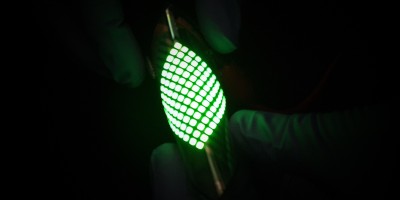In the effort to make better and less expensive optoelectronics devices molecular self-assembly proves to be a solution — in solution.

References
Yamamoto, Y. et al. Science 314, 1761–1764 (2006).
Fairman, R. & Åkerfeldt, K. A. Curr. Opin. Struc. Biol. 15, 453–463 (2005).
Selinger, J. V., Spector, M. S. & Schnur, J. M. J. Phys. Chem. B 105, 7157–7169 (2001).
Boden, N. et al. Chem. Phys. Lett. 152, 94–99 (1988).
Hill, J. P. et al. Science 304, 1481–1483 (2004).
Schwab, A. D. et al. Nano Lett. 4, 1261–1265 (2004).
Author information
Authors and Affiliations
Rights and permissions
About this article
Cite this article
Smith, W. Self-assembly is ready to roll. Nature Nanotech 2, 77–78 (2007). https://doi.org/10.1038/nnano.2007.14
Issue Date:
DOI: https://doi.org/10.1038/nnano.2007.14
- Springer Nature Limited
This article is cited by
-
Stereoselectivity and electrostatics in charge-transfer Mn- and Cs-TCNQ4 networks on Ag(100)
Nature Communications (2012)


